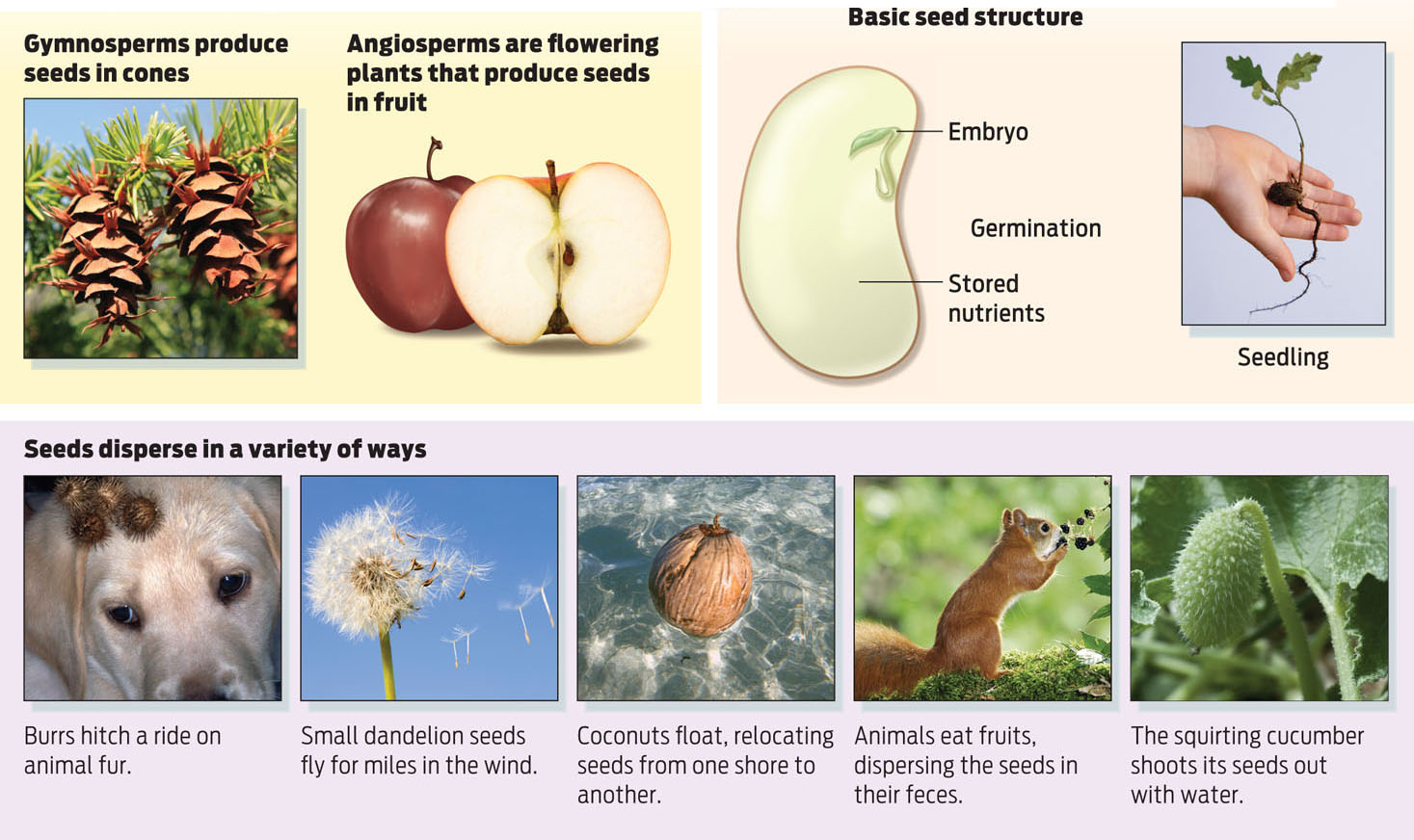 What spins like a helicopter, shoots like a rocket, and contains its own parachute?
What spins like a helicopter, shoots like a rocket, and contains its own parachute?
SEED An embryonic plant contained in a protective structure.
GYMNOSPERMS Cone-bearing seed plants.
ANSWER: The answer to this biological riddle: a seed. Unlike animals, land plants cannot move to seek out more hospitable living conditions for their offspring when resources are scarce or the neighborhood gets too crowded. Forest or desert, valley or mountaintop, plants are stuck where nature put them. Their solution to this enforced sedentary existence is to disperse their offspring far and wide through seeds. A seed is a small embryonic plant contained within a sac of stored nutrients—essentially, a plant starter kit. It develops from a fertilized egg and is a perfect package for delivering an immature plant to its new home and protecting it from harsh conditions. It’s also a tremendously successful evolutionary adaptation, which is why two types of seed-bearing plants dominate the plant world: gymnosperms, which include seed-cone–producing conifers, and angiosperms, the flowering plants. Gymnos is Greek for “naked,” so the name literally means “naked seeds”; in a pinecone, for example, seeds sit nestled under the cone’s scales. In angiosperms, seeds are located inside a fruit or nut: “angio” is derived from the Greek for “vessel” or “container.” Angiosperms make up nearly 90% of all plants—including most of our agricultural crops (see Chapter 22).
ANGIOSPERMS Flowering plants.
729
GERMINATION The process in which a seed comes out of dormancy and a new plant begins to grow.
There are many shapes and sizes of seeds, and they are dispersed in myriad ways. Some are small and hitch a ride on fur or clothing by means of tiny hooks or burrs. Some, like coconuts, are large and buoyant and can float across oceans to reach distant beaches. The delicate parachutes of dandelions, the spinning helicopters of maples and pine trees, and other lightweight seeds sail on the wind. Cottonseeds are little more than hairy specks of dirt, but on a steady breeze they can windsurf for miles. Other seeds are packaged inside fruit. Tempted by the fruit’s bright color and sugary content, animals eat the fruit and then deposit the seeds in feces some distance away from the original plant.
Some seeds are dispersed through a ballistic mechanism. The seedpod of the squirting cucumber (Ecballium elaterium), for example, fills with slimy juice as it ripens. Eventually, the mounting pressure of the increased volume of juice causes the cucumber to shoot off the plant like a rocket, trailing a plume of seeds and slime in its wake. At the slightest touch, the bulging seedpods of the aptly named touch-me-not plant explode, spraying seeds like bullets. When a seed lands in favorable conditions, with enough water, it will germinate and grow into a young plant, or seedling (INFOGRAPHIC 32.7).
Seeds are important for the spread of plant populations. As seeds are dispersed, offspring reach new locations, often far from their parents.
